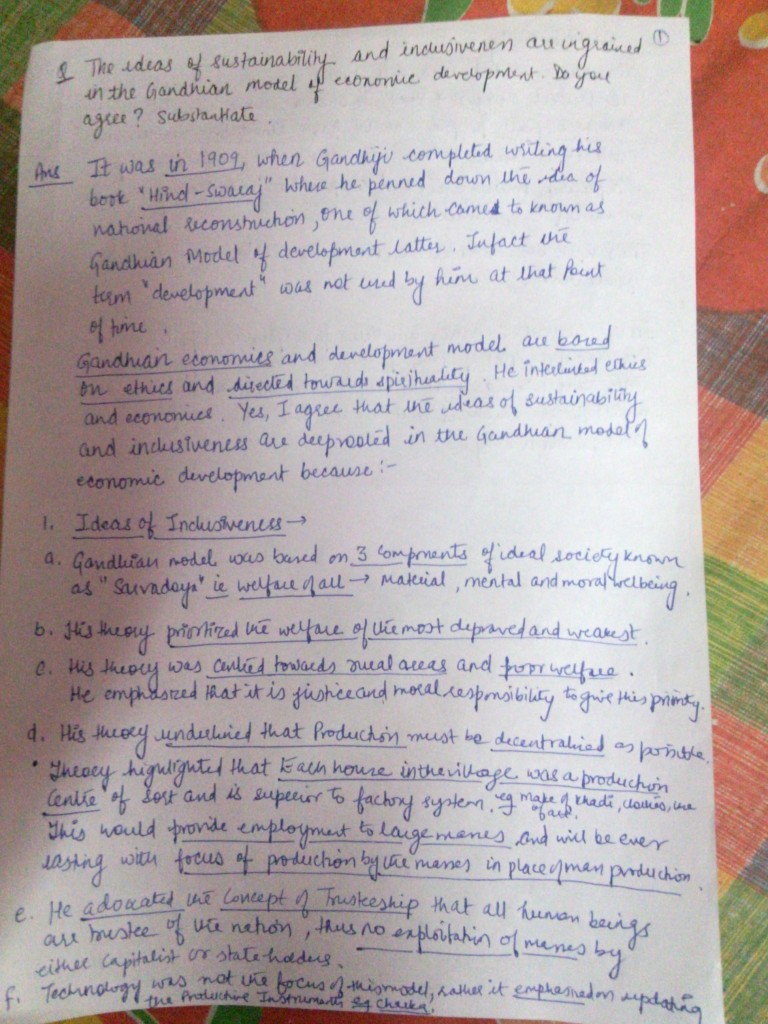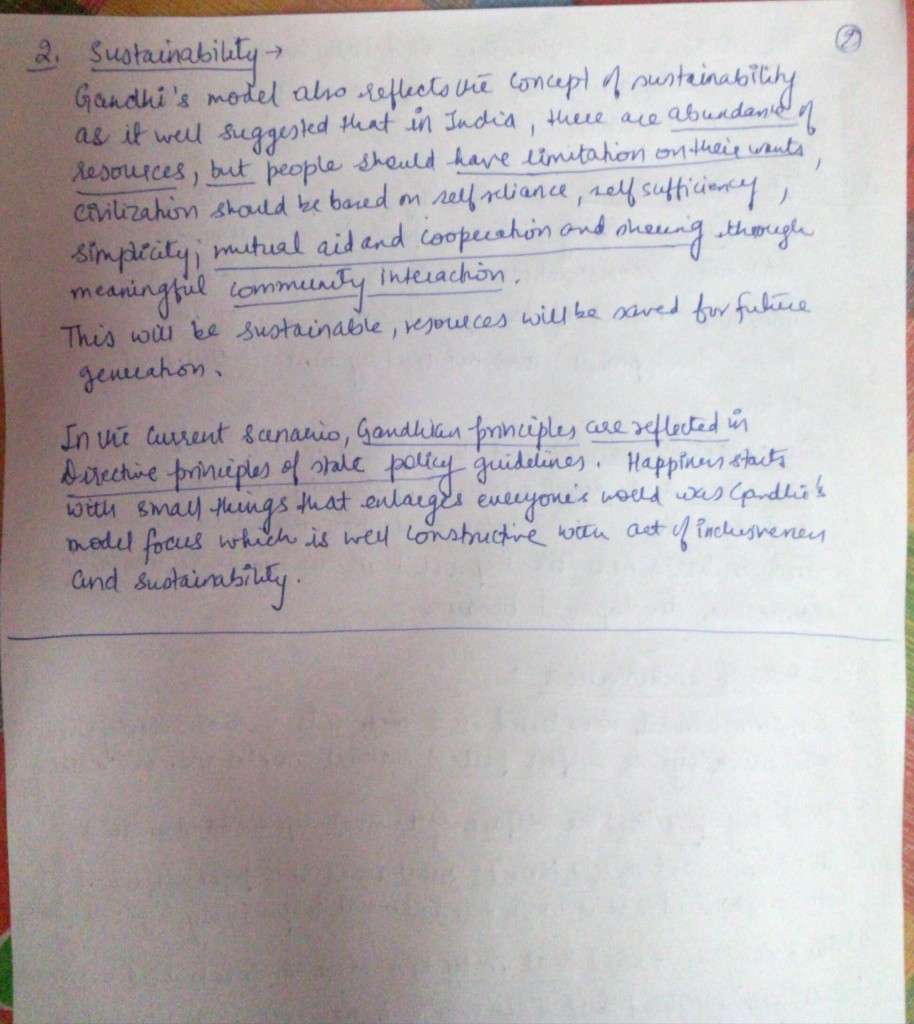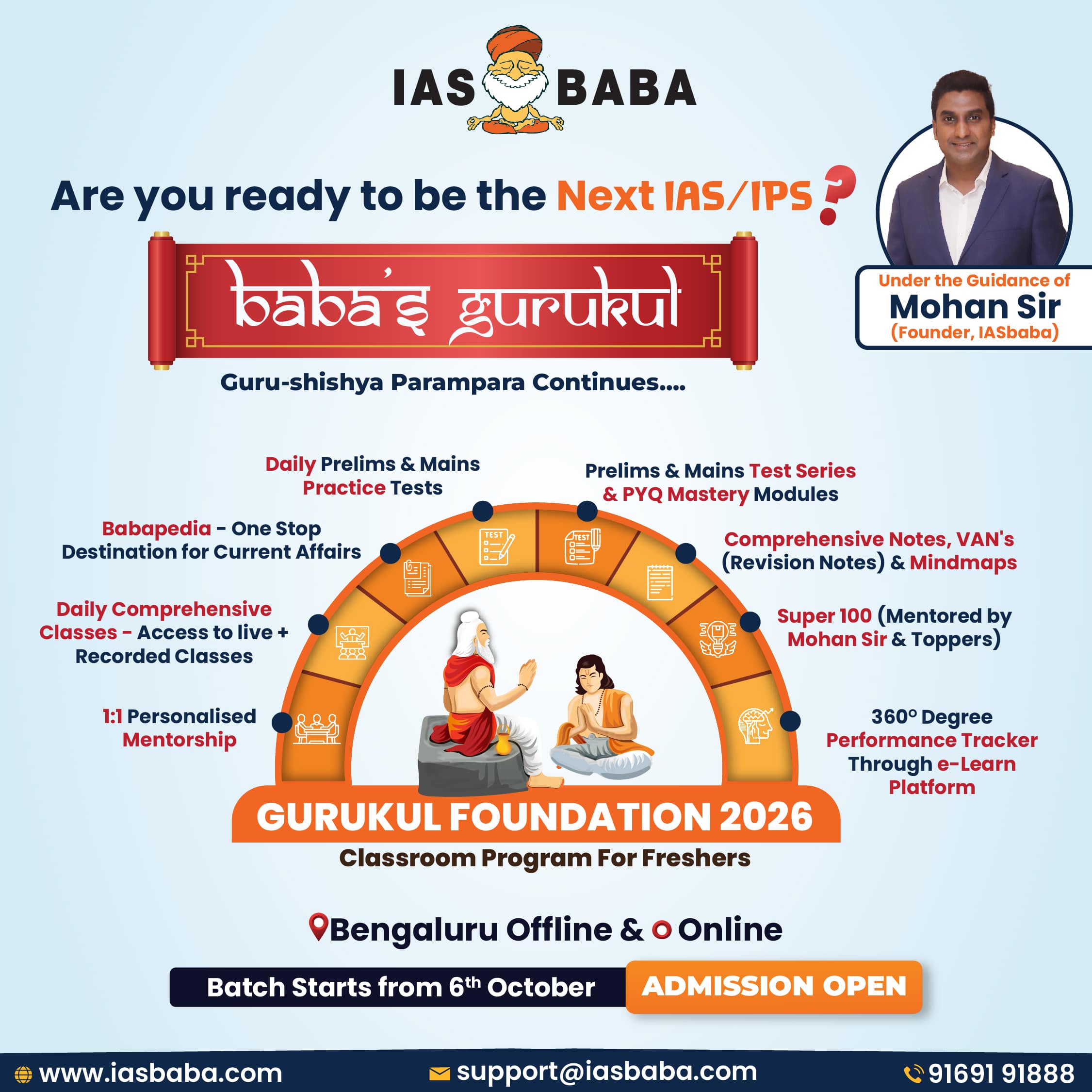IASbaba's Hot Questions, IASbaba's Think Learn Perform 2016, IASbaba's TLP - 2016, Think Learn Perform (TLP)- 2016, UPSC Mains Answer Writing - 2016, UPSC Mains Questions 2016
IASbaba’s TLP 2016 [28th March]: UPSC Mains GS Questions [HOT]: Synopsis
1. What do you understand by ‘citizen centric governance’? Why is so much importance being given to this concept? Is it compatible with the idea of ‘minimum government-maximum governance’? Analyse.
Intro:
All government processes are citizen oriented, a system of where all government activities are pivoted around citizens, citizens become proactive by:
a) Seeking information,
b) Giving suggestions,
c) Demanding better services,
d) Holding service providers and other government agencies accountable.
e) Active participation in decision making.
Body:
- Importance of the concept:
- It helps in managing the citizens demand better by preventing duplication, loopholes and time delays in between the service delivery. E.g. in providing subsidies and targeting of beneficiaries
- Citizens are the providers of finance to the government through taxes, hence the services being offered should reflect their demands and not just what government thinks is good.eg. net neutrality
- Ensuring communities get services and results they need. E.g. the Citizen Grievance Redressal mechanism, PRAGATI where they can address their grievances.
- Enabling citizens to give feedback for improved service delivery. e.g. through Consumer forums, public forums like Facebook, RTI etc.,
- Politically, shift from citizens being considered passive beneficiaries to statutory right holders. Eg:RTI, NREGA, RTE, Right to Services Act etc.
- Making sure that there is no mismatch between what is being demanded and what is being provided, how is it provided (means) and of what quality. E.g. by RTI, and Social audits
- Is the citizen centric and minimum government maximum governance compatible: YES:
- Both the initiatives keep the needs of citizens in focus I.e, to deliver the services at an pre-accepted standards and within a specified time limit, this end can be met with either employing more human hands or by using technology, minimum government, maximum governance focuses more on the technological aspect, by rightsizing the government apparatus ,and streamlining the procedures
- Prior assessments and policies that match the need enhances the functions of an enabler.
E-governance and one stop shops built for improved communication improves the ease of doing business. - Transparency mandated by the approach ensures that the government will take more accountability and ensure quick , efficient delivery of services
- Platform like MyGov and PRAGATI will improve the participatory democracy.
- JAM Trinity, Direct transfer will reduce the human discretion and multiple channels associated with delivery of services thus increasing inclusive welfare
- Conclusion
Write your opinion briefly and conclude.
Best answer: Himani.
The concept of ‘citizen centric governance’ indicates governance in such a manner, which is friendly and gives utmost priority to the interests of the people governed. It thus, includes the concept of participatory governance, wherein the people do not feel that they are merely the subjects of governance by the government, but that the government actually cares about their well-being, and hence their role is very important in the administration of the country.
In a democratic society, usually people do not question the basis of legitimacy of the government. However, a more aware citizenry, and a more vocal civil society, has questioned many actions of the government. Hence, to prove their benevolent character, and to accord legitimacy to their actions, the government has often given importance to ‘citizen centric governance.’ This way, the people feel satisfied that their interests are actually being considered by the government, which thus gives more legitimacy to the actions of the government. Many recent initiatives of the government have often taken public opinion into consideration (ex. Net neutrality issue with TRAI), which further encourages participation by the people in the governance of the country.
The idea of ‘minimum government maximum governance’ indicates that the government will make like easier for the people, without unnecessary interference by the government officials. Thus for instance, the schemes of Direct Benefit Transfer, e- biz platform makes obtaining allowances, licenses etc more convenient for the people, while at the same time saving them from heckling government officials, delaying their work and asking for bribes etc. The spread of information technology has ensured that governance can be effective, while reducing government interference at many levels. This idea is thus compatible with ‘citizen centric governance’, as both of these concepts value the interests of the citizenry first, while avoiding micro management of citizens’ actions.
2. How far has India been able to protect it’s interests at the WTO forum? Identify related issues that have been in news recently? Also analyse India’s stand in Nairobi?
Introduction
As a leader to developing and under developed countries, India’s role in WTO negotiations is praiseworthy. However, many are of the view that India had failed to protect its interests in a long term manner. But, considering the past times and futuristic needs, it is improper to judge India’s achievements with a narrow scope.
Part I: Focus on India’s interests and mention which among these interests were successful/ protected and which are failed. This part should cover some of the following: (Write 3-4 points)
- Three areas of negotiation: agriculture, Non-Agricultural Market Access (NAMA) and services.
- Battle against the inclusion of the so-called “Singapore issues” (trade and investment, trade and competition policy, government procurement and trade facilitation) in the WTO agenda.
- Persisting differences between member countries on market opening commitments
- Special safeguard measures for developing countries in agriculture and public stockholding for food security
- The liberalisation of services trade, particularly on cross-border supply including the IT-enabled services and business process outsourcing and easier temporary movement of natural persons including independent and skilled professionals, needs to figure high on the development agenda.
Part II: Mention few recent issues which are in news
- India’s National Solar Mission road map and Domestic Content Requirement (DCR) clause
- Sanitary and Phytosanitary clauses
- Agreement on Agriculture and Peace clause related to public stockholding of food crops
- India’s ban on import of poultry meat, eggs and live pigs from US
Part III: India’s stand in Nairobi
The Tenth Ministerial Conference in Nairobi saw a clash of Interests between developed and developing Countries. (Write any 4 points)
- India on behalf of 47 developing countries, demanded comprehensive and balanced outcomes, particularly deliverables that would help resource-poor farmers in all the three core negotiating areas, viz., agriculture, non-agricultural market access and services.
- India has expressed disappointment over non-reaffirmation of the long-stalled Doha Round, agreement on removal of cotton subsidy altogether by 01 January 2017, and a few other provisions related to phasing out of export subsidies.
- India strongly argues the case for an effective Special Safeguard Mechanism (SSM) for developing countries and for changing the rules relating to public stockholding for food security purposes.
- India had sought greater flexibility for developing nations to permit subsidies on some products to be hiked, while reducing subsidies on some items.
- India regrets that such longstanding issues of interest to developing countries are being put aside for the future and instead new issues are being taken up with unusual enthusiasm.
- India has urged all nations not to overload the current agenda with “new issues” as there are still many outstanding matters such as protection of poor farmers’ interests and food security rights.
- On the issue of the future of the 14-year-old Doha Round negotiations, India took the stand that the Development Agenda of the Round (to boost the trade prospects of developing and poor nations) must continue after the Nairobi Conference and no new issues must be introduced into the WTO agenda until the Development Agenda has been completed.
Best answer: SVSR
As a leader to developing and under developed countries, India’s role in WTO negotiations is praiseworthy. However, many are of the view that India had failed to protect its interests in a long term manner. But, considering the past times and futuristic needs, it is improper to judge India’s achievements with a narrow scope.
Issues in news:
> Diluting the provisions of Doha Development Agenda.
> No framework for revisiting the base year (currently 1986-88) rates and yield outputs for calculating permissible subsidies.
> Amending Agreement on Agriculture to suit the needs of developing and under developed countries.
> Domestic content requirement clause in India’s National Solar Mission road map and US counters for breach of trade rules.
> Unreasonable imposition of trade and non tariff barriers like phytosanitary norms, quality and checks related issues etc., on Indian exports. (eg. EU ban on Alphonso mangoes, Ranbaxy issue)
India’s stand in Nairobi:
Successful negotiations:
> Complete ban of export subsidies by the developed countries immediately, and reasonable time period for developing countries.
> Mandatory application of safeguards against public stockholding until a permanent solution is arrived.
> India’s forward step to adopt the so called ‘new necessities’ like sound IP regime, environmental laws etc. Of course, these are said to be deviations from Doha Development agenda.
> Establishment of Special Safeguard Mechanism to look after the issues of developing countries like food security, farmer protection etc.
> Permission to levy anti-dumping duties against sudden surges on imports that destabilise domestic markets.
Deemed failures:
> No definite road map and time period for drawing permanent
solution for the issue of public stockholding and amber box subsidies.
> Failure to keep the developing and developed countries united in negotiations and improper commitments.
> Losing relevance to WTO trade regime due to multilateral agreements like TPP, TATI etc.
Notwithstanding to these facts, India had taken a reasonably fair stand in Nairobi declarations as per the time factors. Since, good environmental mandate and IPR is also in the interests of India for better future prospects, it is necessary to dilute some provisions reasonably. However, in order to counter the future threats from the said multilateral agreements, India needs to take follow up steps by uniting all the developing countries.
3. The idea of sustainability and inclusiveness are ingrained in the Gandhian model of economic development. Do you agree? Substantiate.
Introduction:
Basic idea of Gandhian economic model – Gandhian model of economy considered village as a republic. His ideas were village centric where a village is independent in its social, political and economic sphere. He envisaged a vibrant self-sufficient village where people work in cooperation to meet the requirement of the village society. The idea of inclusiveness and sustainability is engrained in the gandhian model of economy which was based on Sarvodaya.
Do you agree?
Give your affirmative stand.
Substantiate:
- Gandhi emphasized equality of labour in village where people worked in cooperation, need of one group is met by the other and thus there is mutual dependence in the village society.
- He favoured cottage industry rather than large scale industrialization because modern industry breeds inequality, division of people in classes, profiteering, exploitation of resources (Unsustainable) whereas cottage industry utilises sustainable approach to meet local needs.
- His idea of Varna Vayvasta emphasized adoption of ones hereditary calling where by people will expertise in his chosen field, it will prevent unnecessary competition, and equality of labour.
- He envisioned decentralization of power to the village where by people take the decision as per the need and requirement of the society.
- His proposed the idea of trusteeship where people are trustee of their power, capacity, energy and time. The idea of trusteeship implies ownership of the society, a care taker where all the economic decision is taken keeping society at its center.
- He was against the use of machines as he believed that it would render unemployment to many.
- This model hugely depended on skilling all people for work and thus, this gave opportunity to all to work in profession other than the one which caste structure ordains. This promoted inclusiveness.
- He believed and promoted dignity of manual labour to emphasize on the importance of self-sufficiency and sustainability. He brought in the notion of “Take pride in your work” and “no work is beneath you”. This automatically made his model inclusive as it brought hitherto neglected groups within the economic fold.
- Gandhiji firmly believes that “the Earth has enough resources to meet everybody’s needs, but not everybody’s wants”. This projects the need for rational and optimal utilisation resources.
- Habituating simple lifestyles – might have controlled the present day exorbitant lifestyles that is the prime cause for environmental degradation.
- Anti-consumerism and need based production – the present system of production and advertising creates ‘needs’ and ‘wants’ for profit motive and substantially mounts pressure on resources.
Conclusion:
Working on his ideas can resolve many problems that we are facing today like climate change, global economic slowdown, emergence of new disease, decreasing productivity of agriculture and insecurity among minorities. Recent projects like start up India, Stand up India, Make in India etc should be mentioned.
Best answer: Snow White














